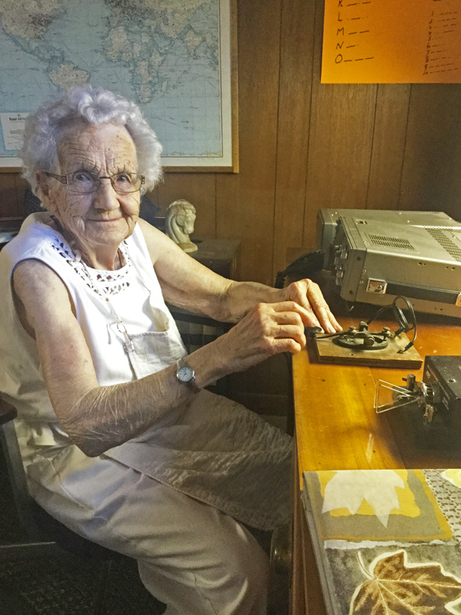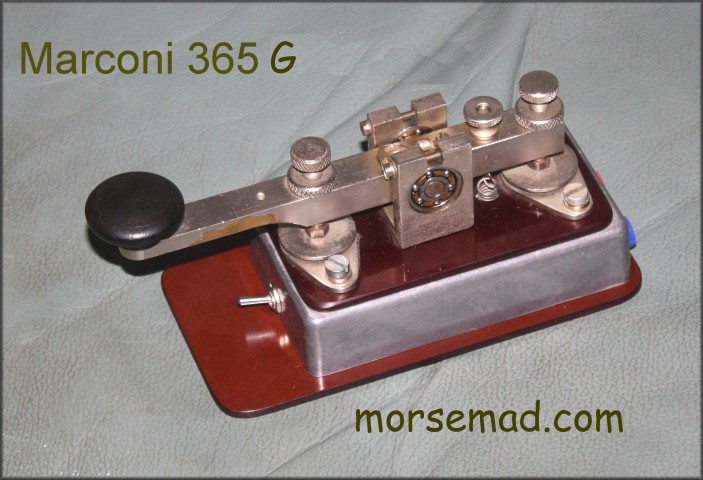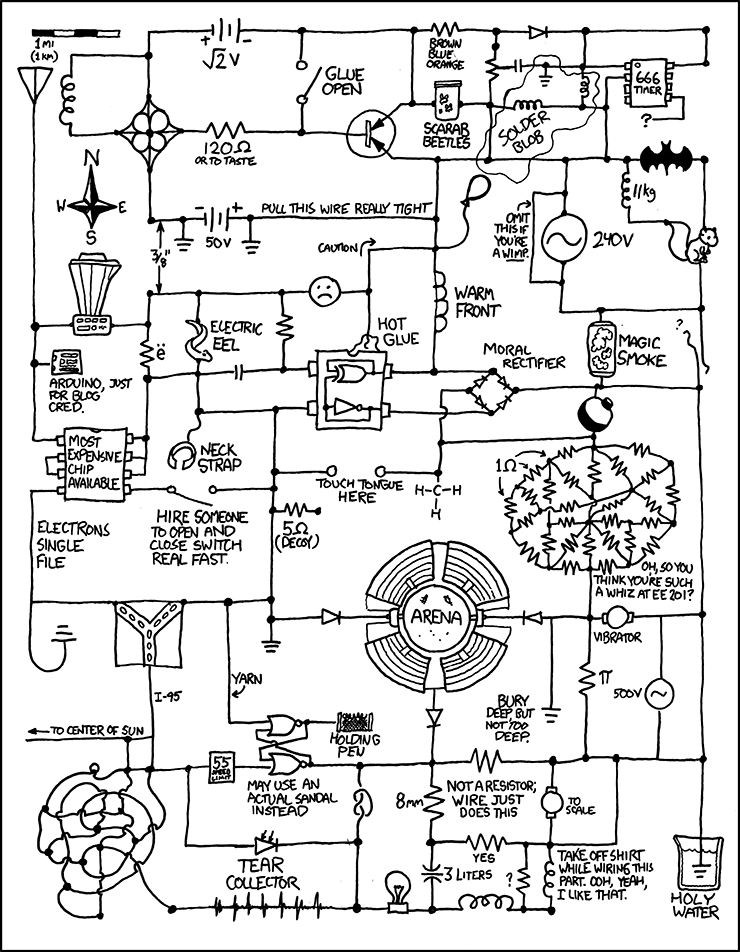
PA3CLQ's Leuke Linken Nr. 437
I come out of my dark hole
I need to discuss this here i think.
An important part of the translation in PLL Nr. 345 was shit.
It was the concept from the not yet ready version.
Fat Fingers? One ore more senior moments?
An feelings of embarrassment to many participants overwhelmed me lately.
There is also 'good' news: no one has complained about this,,,,,,, perhaps no one has read it and that is ....
So for the time being there is no reason to crawl back in my hole, .....I doubt.
I know, my English can much better
Zo kan het wel weer J.P.!
Your editor.
In my PLL Nr. 435 I wrote a little provocative to the non CWers
One has problems with ............and further....Is very disturbing to hear on the 40 meters band a HAM calling CQ 40 CQ 40 CQ 40 de (His Call) as if the listener is unaware (an idiot) that he listens on the 40 meter band.
REM :
Wim PA0WV reageerde met:
Wim PA0WV responded with:
Dat
is helemaal niet zo gek als je denkt.
That's not as crazy as you think.
In het verleden had je een eindtrap in klasse C voor telegrafie of voor AM, dan moduleerde je de anodespanning.
In the past you had an output stage in class C. For telegraphy or AM you modulated anode voltage
Klasse C geeft veel harmonischen.
Class C gives a lot of harmonics.
De anodestroom stootte de eindkring aan
The anode current touched the final circuit
De antennekring is met een paar windingen daaraan gekoppeld
The antenna circuit is coupled thereto with a pair of windings
Dus de harmonischenonderdrukking van die kring was niet best,
So the harmonic suppression of that circuit was not good,
Als je dan op 40 riep was er dikke kans dat je op 20 met de tweede harmonische gehoord werd.
If you had called at 40 meters there is a good chance that you were heard at 20 meters on the second harmonic
Of dat je op 21 MHz veel verder te horen was en mensen gingen terugroepen
it was possible that you also were heard on 21 MHz further away and that radio amateurs calling back
Om dat te voorkomen: cq 40!
To avoid this: CQ 40!
Mede omdat de amplitudemodulatie doorgaans voorzien was van FM, die dan via flankdetectie (conversie van FM naar AM) prima te verstaan was.
Partly because the amplitude modulation was usually include FM, which
then was fine identifiable from edge detection (conversion from FM to AM).
Ik
herinner me als jonge knaap dat PAoBZ die dicht bij me woonde elke zondag, als
start van de zogenaamde haagse gang riep: CQ tachtig hallo cq cq cq tachtig van
pa0bz.
I remember as a young boy that PRoBZ which lived close to me every Sunday to launch the so-called "haagse gang" shouted: CQ eighty hello cq cq cq eighty de pa0bz.
Ik had daarvoor een tweetrapszender een EL3 als ECO /VFO en een 807 erachter, schema uit Seinen en Opnemen van de Muiderkring (Amroh)
I had previously a two-stage transmitter, a EL3 as ECO / VFO and 807 behind. schedule from "Seinen en Opnemen" of the Muiderkring (Amroh)
Ik had een dip in de PA en zenden maar, met aangekoppelde Zepp die de dip minder maakte.
I had a dip in the PA so when i transmit the coupled Zepp made the dip less.
PAoBZ hoorde nauwelijks iets, tot ik erachter kwam dat de PA op 40 resoneerde dus de 807 als verdubbelaar stond.
PAoBZ heard hardly anything, I found out that the PA resonated at
40 because the 807 worked as a doubler.
Betreffende
de wettelijk vereiste onderdrukkingen van de harmonische en de
fabiekspecificatie verteld Wim het volgende:
On the legally required suppression of the harmonic and fabiekspecificatie told Wim the following:
Tegenwoordig ligt de vereiste onderdrukking in de orde van 35dB of 40 dB, zoiets, en dat red je niet met een PA kring zonder low pass kring erachter.
Nowadays, the required suppression is of the order of 35 dB or 40 dB, an PA circuit without a low pass circuit behind it do not suppressed the harmanischen enough.
Kring 12 dB per octaaf dus op 40 meter 12 dB down ruw weg, dat is twee S-punten zwakker op 40 dan op 80.
Circuit 12 dB per octave, so 40 meters down about 12 dB, which is two S points weaker at 40 than at 80.
Allemaal grof gerekend want de antenne afgestemd op 80 zal op 40 een mismatch geven dus ook minder opnemen,
All coarse counted because the antenna tuned to 80 will give on 40 a mismatch therefore absorb less,
Maar dat neemt niet weg dat het heel goed mogelijk is dat jouw harmonischen op de dubbele frequentie veel verder weg komen ook met 36 dB onderdrukking wat 6 S punten is.
It is quite possible that your harmonics at twice the frequency comes much further away also with 36 dB suppression which is 6 S points.
Bij een 500 W zender altijd nog 0,1 watt.
With a 500W transmitter still 0.1 watts.
Er zijn mensen die met 0,1 W de hele wereld hebben gewerkt.
There are people who have worked the hole world with 0.1 W.
73, PAoWV
Real Morse on the radio . . .
We
all hate it when we see a TV shows, movie, or hear radio shows with telegraph
sounds faked.
On weekends I enjoy listening to new and old-time radio shows on Seattle
station KIXI 880 AM, bout usually stream it online.
Around the first of the month, they air "Powder River," an excellent period show set in Wyoming around 1895.
Great acting and scripts.
Last
weekend they reprised an older segment on Saturday evening, then a new one
Sunday evening, per usual. The show is now in its 12th year, and you can also
listen to their podcasts on the Internet.
On occasion the have tgh in the background as the lady that
manages the hotel is also the operator. It is hard to catch the Morse between
actors speaking sometimes, but on Sat. Eve, for instance, I was able to read
" turns" in clear Morse.
Just
wondering who is providing the transmission they use.
http://www.audible.com/pd/Fiction/Powder-River-Season-7-Vol-1-Audiobook/B00DZS6WL0
Anyhow, just nice to hear the real thing on a drama for a change.
I don't know why they don't have tgh at the depot rather than hotel, but I know that was done some places.
Maybe
the hotel had Postal instead of WU. ? ;-)
73, Skip
The
next issue of the" Rag Chew" is out.
This
issue so far has 32 pages; kits built in ON land, fantastic "home
brew" keys from one of or members, discoveries by a VK2 member of great
software, "large" antenna raisings, restored "Junkers,"
lots of FD stories, awards, an antique radio museum, WWII stories and much
more.
Ted K8AQM #1629S SKCCGroup
REM :
Get it at:
http://www.skccgroup.com/member_services/newsletter/issues/201609_Rag_Chew.pdf
Editor
Crossword puzzle
Here you go folks.
And
as with any crossword puzzle, if you need help, Google can be your friend. ;-)
http://www.skccgroup.com/operating_activities/weekend_sprintathon/boatanchors-1.pdf
What crossword puzzle?
You'll
find that answer here:
http://www.skccgroup.com/operating_activities/weekend_sprintathon/
With
best regards,
Peter N. Spotts -- N1ABS
About Antennas
Wire antennas (dipole, End Fed Half Wave, etc.) work very well, are easy to erect and relatively easy to conceal.
Most campsites here in the west are big enough to string a 40 meter dipole without encroaching on neighbors.
Eric KE6US
REM :
Looks like wire is going to be the way to go.
There are a few available trees in my home base here.
I wonder about the injury to birds and squirrels though.
Perhaps at 100 watts it’s not a problem.
Michael Jackson, KG5MNE
REM
Right, 100 Watts is not a problem.
Wire antenna legs here:
https://intuitiveelectronics.wordpress.com/
have run through trees for a decade.
This is an old area and it's in an old city so there are many large evergreen trees around.
Many squirrels, too many squirrels, in fact, reside in the trees and patrol through them continuously to make their living.
To this date no squirrel has lodged a complaint.
The squirrel population is healthy.
The local birds are not complaining either.
John Ningtingale,
REM :
The main problem with birds is that antennas seem to scare the you know what out of them because plenty gets deposited.
I see a Great Horned Owl and some Raptors sitting on my antenna quite often.
I can't see the antenna when I transmit, but they don't seem concerned.
Squirrels seem pretty agile, but they seem to prefer trees to antennas.
Willis Cooke
REM :
Bird perching is not an issue out on the main antenna legs when using #26 wire as is done at radio station VE7AOV
https://intuitiveelectronics.wordpress.com/
Such wire is far too unstable.
It would waggle, there's no mass to mention in such wire.
Anyway, their feet can't get a grip on the tiny wire; they would end up hanging from it upside down!
Little dicky birds will sometimes try to perch on the #26 wire feeder runs right at the supports but that's rare, there are easier things to perch on...as they learn at once.
A #26 wire; less than half a millimetre in diameter, 0.016 of an inch
https://intuitiveelectronics.files.wordpress.com/2014/06/wire-thickness-close.jpg
is nearly invisible even to the birds.
A reasonable cantenary is left in the wire so that if a bird should fly into it, he loses his air speed, shakes himself loose from the wire, drops away and carries on. So, ahhh, fellows, don't worry about a beef from tree huggers: there will not be a line of little feathery corpses beneath your invisible antenna!
John Ningtingale,
REM :
That is quite an article John.
I wish I had some eaves on this motorhome.
Michael Jackson, KG5MNE
REM :
I put a Hustler 4BTV on the rear bumper of my trailer.
Works well, and a fairly inexpensive antenna.
You might find a used one for they have been around a long time.
I have photos of my rear bumper mount on the bottom of my QRZ page if that might work for you.
73, Gary KW4MG
REM :
Good, Michael, glad you enjoyed it.
Fine wire antennas are "freeing".
Many old folks like myself and others on this list end up in apartments and other restricted environments.
The theory driven into all of us has been that a single strand of fine wire will dissipate our r.f. in heat because of I^2 R copper losses.
It just isn't so at least at 100W.
The tuning of this antenna and earlier such antennas is razor sharp which means that copper "R" is not a factor.
A fine wire like this doesn't seem to bother anyone visually, Michael.
It casts no shadow and one has to look carefully even to see it.
Repeatedly people have said that a copper wire less than half a mm in diameter will keep breaking.
It doesn't keep breaking, it hasn't broken at all.
It has about a one metre, one yard, sag in it and that's all that's required to accommodate wind, birds or whatever.
It's a good bet that if you and others on this list fling an antenna like this up into the trees at a campsite, not only will your neighbours not be beefing but in among the tree branches they won't even know that it's there.
Fed as shown on the site, since there's no ground reference you
won't be bothering their electronic devices, either.
If you or others experiment, please let me know how you make out on list or off
list at if455kc@yahoo.com

Still sending code at 93
This an article about a lady whose has been using code since WWII.
http://elinorflorence.com/blog/merle-taylor-morse-code
Joe Fehrenbacher MTC Office Call: MV

Record
level monitoring
http://www.darkwooddesigns.co.uk/pc2/meters.html
Takes
up a bit of screen real-estate, but never mind.
73 Stewart G3RXQ
REM :
Windows
Sounds Control Panel has a small "VU" meter for each input (Recording
Devices tab).
73, Joe, W4TV
REM :
Would
something like this help?
http://peak-level-meter.software.informer.com/
Joe WB9SBD
A Marconi 365G ( at least - that's what I call it).
John Morsemad G0RDO

Circuit schematic
Enjoy
. . .
Skip Luke
SlowSpeedWireGroup

73, your Editor Jan Pieter Oelp PA3CLQ
-30-
My simple website about Gigantic DF-Antennas
Part 1 "DF-Antenna Wullenweber Array"
Part 2 "DF-Antenna USSR Variants"
Part 3 "DF-Antenna USA Variant"
Next Part 4 "USSR OTHRA DUGA 1,2 & 3" at: